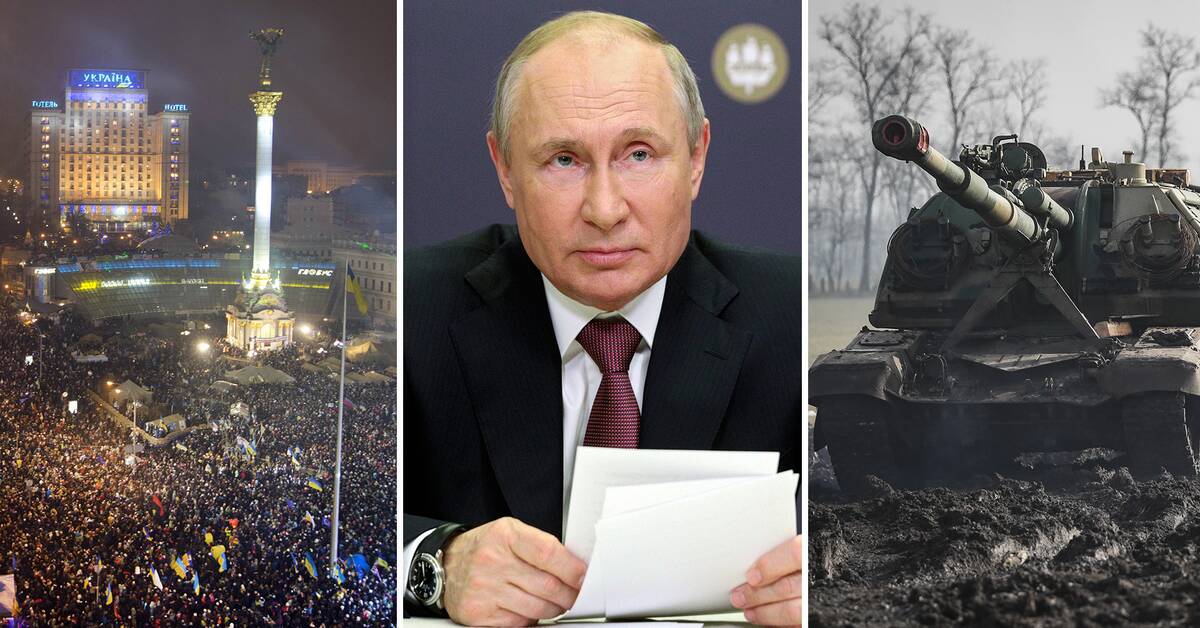The Majdan Protests (2014)
In November 2013, a series of large-scale demonstrations began in Ukraine, which would later become known as the Majdan Protests.
The demonstrations are a reaction to the fact that Ukraine's pro - Kremlin government is not signing a cooperation agreement with the EU, which in practice would make the country less dependent on Russia.
The protests culminate in February 2014 when over a hundred people were shot dead on and around Majdan Square in Kiev.
The events that follow then are usually described as a political earthquake.
The government resigns and incumbent President Viktor Yanukovych flees the country.
Later in the spring, the more pro-EU Petro Poroshenko will be elected the new president of Ukraine.
The annexation of Crimea (2014)
At the same time as Ukraine is being shaken by the Majdan protests, the first reports of "little green men" are coming to the Crimean peninsula.
In February 2014, masked soldiers without a nationality designation on their uniforms took control of several important buildings and deposed the local government.
The new regime calls for a referendum - ruled by the West as illegitimate - on joining Russia.
In the summer of 2015, Russia's then Prime Minister announces that the Crimean Peninsula has become a fully integrated part of Russia.
The War in the Donbass (2014)
In the Donbass region of southeastern Ukraine, the ousting of Viktor Yanukovych is leading to new demonstrations among sections of the population critical of the Mayan protests.
Fighting breaks out and pro-Russian separatists take control of large areas along the border with Russia.
In April 2014, two independent so-called People's Republics are proclaimed: the Donetsk People's Republic and the Luhansk People's Republic.
The two breakaway republics are considered by the West to be closely linked to Russia and have been at war with Ukraine since 2014.
Russian military exercises (2021-2022)
In early 2021, fighting in the Donbass will intensify.
In March of the same year, the first reports of Russian troop movements coming to the Ukrainian border.
In April 2021, Putin announces that major military exercises will be conducted along the border with Ukraine.
In November of the same year, the President of Ukraine flags that 100,000 Russian soldiers are stationed on the Russian side of the border.
In February 2022, Russia will launch another major military exercise in Belarus, which also borders Ukraine.
Security policy requirements list (2021-2022)
In December 2021, Russia will present a number of high-level security policy requirements to the United States and NATO.
Among other things, they want to exclude further NATO enlargement, which would mean that Ukraine, Sweden or other countries will not be allowed to join in a possible future.
Another requirement is that NATO withdraw all weapons and troops deployed in countries that joined the alliance after 1997, which would include large parts of Eastern Europe, including Poland, the Baltics and the Balkan countries.
It also wants promises that NATO will not conduct operations in Ukraine, Eastern Europe, the Caucasus and Central Asia and that the parties (Russia, USA and NATO) will not place short- and medium-range robots in areas that allow them to reach each other's territories.
The United States and NATO have responded, but the content of the responses is not known in detail.
However, Russia's Foreign Minister Sergei Lavrov said in January 2022 that Russia had not received a positive response from the United States regarding the "main issue" of security guarantees.

